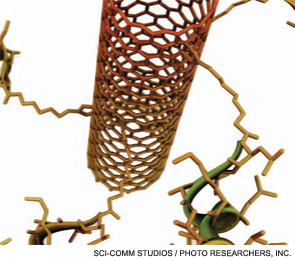
Explore This Issue
September 2011The biggest gains in the future for surgical and therapeutic treatments of head and neck cancer will likely include the use of imaging techniques, radio-enhancers and drug delivery vehicles that are really, really small.
The first nanostructure, the “buckyball,” was created in 1985 from just 60 carbon atoms; elongated carbon nanotubes, which quickly found a place in composite materials, soon followed. In medicine, taking a cue from the hollow buckyball construct, the drug Doxil was created in 1995 by loading the chemotherapeutic doxorubicin within a lipid nanoparticle. To get an idea of nanomedicine’s scale, consider the fact that mammalian cells are typically 2,000-10,000 nm, and cellular organelles range from 100 to 300 nm, while nanoparticles are often 50 nm or less.
Surgeon and nanotechnologist Ivan El-Sayed, MD, associate professor in the department of otolaryngology-head and neck surgery at the University of California-San Francisco, just published a review of the topic as it relates to gold nanoparticles (Curr Oncol Rep. 2010;12(2):121-128). Dr. El-Sayed’s interest focuses on several potential applications, imaging in particular, and the nanoparticles in question are indeed made of gold. “Gold is very interesting because it has extraordinary optical properties,” he explained; it is able to scatter or absorb light, and, critically, both of these phenomena can be detected and are capable of providing in vivo information. Further, gold absorbs different wavelengths of light that, depending on the wavelength, may result in the particles giving off heat to the surrounding tissue or even ionizing radiation.
So what does this mean for head and neck cancer patients? The applications include tissue imaging, photothermal ablation of tissues surrounding a gold nanoparticle, radiation enhancement and drug delivery (an ability inherent to the scale of nanomaterials in general).
Taken in reverse order: A tumor-targeted gold particle coated with tumor necrosis factor alpha is currently the subject of a phase I clinical trial. For radiotherapy, due to gold’s absorption properties, “we could actually reduce the dose of radiation that we have to give to the patient,” Dr. El-Sayed said, “but still have effect at the tumor site, meaning that we might be able to re-radiate down the road.” Photothermal ablation of tissue is also a possibility, with the potential to overcome tumor drug resistance when used with chemotherapy.
Leave a Reply